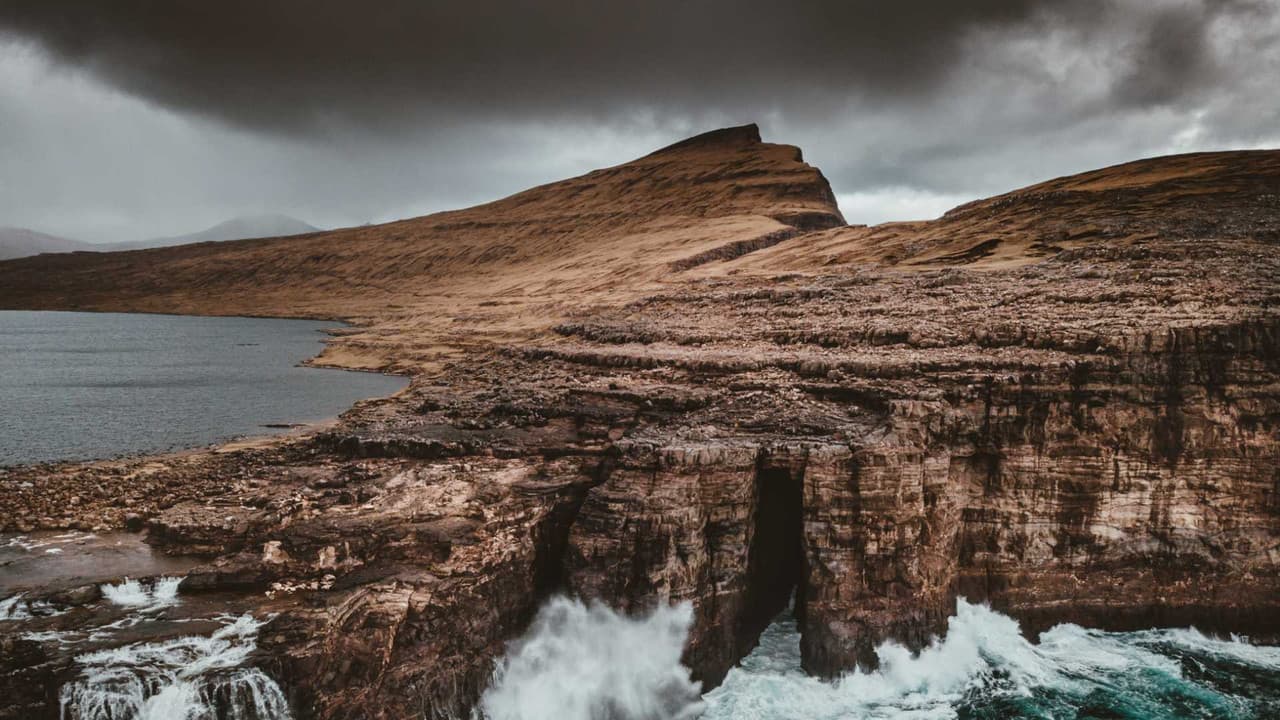Lucas Botzen
Founder & Managing Director
Last updated:
November 10, 2025
What is an Employer of Record in Faroe Islands?
View our Employer of Record servicesAn Employer of Record (EOR) is a service that helps you hire employees in the Faroe Islands without needing to set up a local legal entity. An EOR acts as the legal employer for your staff, handling payroll, taxes, benefits, and compliance with local labor laws. This allows you to focus on managing your employees' day-to-day work while the EOR takes care of the administrative and legal responsibilities. Companies like Rivermate provide EOR services to simplify your global expansion.
How an Employer of Record (EOR) Works in Faroe Islands
Using an EOR in the Faroe Islands simplifies the process of hiring talent. Here’s how it generally works:
- You Find the Talent: You recruit and select the candidate you want to hire in the Faroe Islands.
- The EOR Hires the Employee: The EOR legally hires the employee on your behalf through a compliant local employment contract.
- Onboarding and Compliance: The EOR manages all the necessary paperwork for onboarding, ensuring everything complies with Faroese labor laws.
- Payroll and Benefits Management: The EOR handles payroll, ensuring your employees are paid correctly and on time in the local currency. They also manage all mandatory benefits like social security contributions, annual leave, and parental leave.
- You Manage Your Team: While the EOR handles the HR and legal aspects, you manage your employee's daily tasks and responsibilities.
Why use an Employer of Record in Faroe Islands
Using an EOR in the Faroe Islands can be a smart move for your business, especially if you are expanding internationally. It allows you to enter the Faroese market quickly and efficiently without the significant investment of time and money required to establish a local entity.
Here are some key reasons to use an EOR:
- Avoid Setting Up a Legal Entity: You can hire employees in the Faroe Islands without going through the complex and costly process of establishing a local company.
- Ensure Compliance with Local Laws: EORs have local expertise and ensure you comply with the specific labor laws, tax regulations, and social security requirements of the Faroe Islands.
- Save Time and Money: An EOR streamlines the hiring and payroll processes, which saves you time and reduces administrative costs.
- Access to a Wider Talent Pool: By removing geographical barriers, you can hire the best talent in the Faroe Islands, regardless of where your company is based.
- Reduce Risk: An EOR takes on the legal responsibility for your employees, reducing your risk of non-compliance and potential penalties.
Responsibilities of an Employer of Record
As an Employer of Record in Faroe Islands, Rivermate is responsible for:
- Creating and managing the employment contracts
- Running the monthly payroll
- Providing local and global benefits
- Ensuring 100% local compliance
- Providing local HR support
Responsibilities of the company that hires the employee
As the company that hires the employee through the Employer of Record, you are responsible for:
- Day-to-day management of the employee
- Work assignments
- Performance management
- Training and development
Costs of using an Employer of Record in Faroe Islands
Rivermate's transparent pricing model eliminates complexity with a single, competitive monthly fee per employee. Unlike traditional PEO providers, our pricing in Faroe Islands includes comprehensive HR support, benefits administration, compliance management, and access to our proprietary dashboard for real-time workforce analytics. No hidden costs, no setup fees—just straightforward pricing that scales with your business needs while ensuring full legal compliance in Faroe Islands.
Employ top talent in Faroe Islands through our Employer of Record service
Book a call with our EOR experts to learn more about how we can help you in Faroe Islands







Book a call with our EOR experts to learn more about how we can help you in Faroe Islands.
Trusted by more than 1000 companies around the globe
Hiring in Faroe Islands
Hiring in the Faroe Islands has its own unique considerations. As a self-governing territory within the Kingdom of Denmark, its labor laws are influenced by Danish regulations but have their own specific rules. Navigating the legal landscape is key to a successful hiring process. This guide will walk you through the essentials of employing talent in the Faroe Islands.
Employment contracts & must-have clauses
Written employment contracts are standard practice in the Faroe Islands and help clarify the terms of employment. While verbal agreements can be legally valid, a written contract is highly recommended.
Your employment contracts should include the following essential clauses:
- Identification: Full name and address of both you and the employee.
- Workplace: The primary location where the employee will work.
- Job Title and Description: A clear outline of the employee's role and responsibilities.
- Start Date: The date the employment begins.
- Duration: Whether the contract is for a fixed term or is indefinite.
- Probation Period: Details of any probationary period.
- Salary and Payment: The agreed-upon salary, payment frequency, and method.
- Working Hours: The expected daily or weekly working hours.
- Leave Entitlements: Information on paid holidays and other leave.
- Notice Period: The required notice for termination by either party.
- Governing Law: A statement that Faroese law governs the contract.
Probation periods
It is common to include a probationary period in employment contracts in the Faroe Islands. This allows both you and the new employee to assess the fit.
- Typical Duration: A probationary period is often three months.
- Notice During Probation: Shorter notice periods usually apply during probation, a common example being 14 days.
It's important to clearly state the length of the probationary period and the notice terms in the employment contract.
Working hours & overtime
The standard workweek in the Faroe Islands is typically 40 hours, with an 8-hour workday. These hours can vary depending on collective bargaining agreements within specific industries.
Work performed beyond standard hours is considered overtime and must be compensated at a higher rate. Overtime pay rates are usually outlined in the relevant collective agreement or the employment contract.
Public & regional holidays
Planning for public holidays is an important part of managing your workforce. Here is a list of public holidays in the Faroe Islands for 2025:
| Date | Holiday |
|---|---|
| January 1 | New Year's Day |
| April 17 | Maundy Thursday |
| April 18 | Good Friday |
| April 21 | Easter Monday |
| April 25 | Flag Day |
| May 16 | General Prayer Day |
| May 29 | Ascension Day |
| June 5 | Constitution Day |
| June 9 | Whit Monday |
| July 28 | St. Olaf's Eve |
| July 29 | St. Olaf's Day |
| December 24 | Christmas Eve |
| December 25 | Christmas Day |
| December 26 | Boxing Day |
Hiring contractors in Faroe Islands
You can engage independent contractors in the Faroe Islands for specialized skills or project-based work. However, it is crucial to correctly classify the relationship to avoid legal and financial risks.
An independent contractor generally:
- Controls their own work, including how and when it is done.
- Uses their own tools and equipment.
- Is free to work for multiple clients.
- Bears their own financial risk.
- Works on a project or for a limited duration.
Misclassification Risk
Misclassifying an employee as an independent contractor can lead to serious consequences. If a worker is deemed to be an employee in practice, you could be liable for:
- Back payment of taxes and social contributions.
- Unpaid employee benefits, such as holiday and sick pay.
- Interest on unpaid amounts.
- Financial penalties and fines.
- Legal costs from potential lawsuits.
An Employer of Record (EOR) can help you mitigate these risks. An EOR ensures that your workers are classified correctly according to Faroese law, and manages all HR functions, including payroll, taxes, and benefits. This allows you to focus on your business while ensuring full compliance with local labor laws.

Compensation and Payroll in Faroe Islands
Understanding compensation and payroll in the Faroe Islands is straightforward. Most employment conditions are set by collective agreements between unions and employer organizations. This means that your industry and role will largely determine your salary and working hours. The local currency is the Faroese króna, which is pegged to the Danish krone (DKK).
Payroll cycles & wage structure
Your pay cycle will typically be monthly. You can expect to receive your salary at the end of the month or the beginning of the next. Payments are made directly to your bank account.
Your gross salary is your total pay before any deductions. This includes your basic salary, any overtime pay, and other allowances. Salaries are competitive and reflect the high cost of living in the Faroe Islands.
Overtime & minimums
The standard work week is 40 hours. Anything beyond that is considered overtime and will be compensated according to your collective agreement. There is no single national minimum wage. Instead, minimum wages are set by the collective agreements in each sector.
Employer taxes and contributions
As an employer, you are responsible for a few key contributions based on your employee's gross salary.
| Contribution | Rate | Notes |
|---|---|---|
| Holiday Pay (FeriuLøn) | 12.5% of gross salary | Set aside to be paid out when the employee takes their holiday. |
| Unemployment Insurance (ALS) | 1.25% of gross salary | Both employers and employees contribute to this fund. |
| Pension Contributions | Varies | Often stipulated in collective agreements and shared between employer and employee. |
Employee taxes and deductions
Your take home pay is your gross salary minus several deductions. The income tax system is progressive, meaning higher earners pay a larger percentage.
| Deduction | Rate | Notes |
|---|---|---|
| National Income Tax | Progressive rates | No tax on the first DKK 65,000. After that, rates increase with income. |
| 15% - 30% | The specific rate depends on your income bracket. | |
| Municipal Tax | 16% - 22% | A flat rate that varies depending on your municipality. |
| Unemployment Insurance (ALS) | 1.25% of taxable income | Paid by all working individuals between 16 and 67. |
| Parental Leave Fund (Barsil) | 0.71% of taxable income | For those who are fully taxable and between 16 and 67 years old. |
| Public Health Insurance (Heilsutrygd) | DKK 175 per month + 0.60% of taxable income | A flat fee plus a percentage of your income. |
| Labour Market Pension Fund (AMEG) | 3% of taxable income | For employees under the age of 67.5. |
| Public Broadcaster Fee (Kringvarp Føroya) | DKK 150 per month | For individuals between 24 and 66 years old. |
How an Employer of Record, like Rivermate can help with payroll taxes and compliance in Faroe Islands
An Employer of Record (EOR) manages monthly payroll calculations, employer contributions, and tax filings in-country on your behalf. Rivermate handles registrations, payslips, statutory reporting, and remittances to authorities so you stay compliant with local rules and deadlines—without setting up a local entity. Our specialists monitor regulatory changes and ensure correct rates, thresholds, and caps are applied to every payroll cycle.
Loading calculator...
Benefits and Leave in Faroe Islands
In the Faroe Islands, employee benefits and leave are well-defined. They provide a strong foundation for worker wellbeing and are a key part of any employment contract. Understanding these entitlements is crucial for any employer. These regulations ensure employees have enough time for rest, family, and personal needs.
Statutory leave
Annual Leave Employees are entitled to a minimum of 25 days of paid annual leave per year. This is based on a standard five day work week. Holiday pay is typically accrued at a rate of 12% of the employee's gross salary from the previous calendar year.
Sick Leave Employees can take paid leave if they are unable to work due to illness. The specific terms for sick leave, including payment, can depend on the employment contract and any collective agreements in place. For longer absences, an employer may require a doctor's certificate.
Parental Leave Parents are entitled to a total of 52 weeks of paid leave after the birth of a child.
- Mothers can take 4 weeks of leave before the birth and 14 weeks after.
- Fathers or co-mothers are entitled to 4 weeks of paid leave.
- The remaining 34 weeks can be divided between the parents as they choose.
Child's Sick Days An employee with a fixed monthly salary has the right to 2 days of paid absence if their child is sick. The total number of days for a child's illness cannot be more than 10 days per year for each child.
Public holidays & regional holidays
Employees are generally entitled to a paid day off for public holidays. If an employee needs to work on a public holiday, they are usually entitled to extra pay.
| Holiday | Date (2025) |
|---|---|
| New Year's Day | January 1 |
| Maundy Thursday | April 17 |
| Good Friday | April 18 |
| Easter Monday | April 21 |
| Flag Day | April 25 |
| General Prayer Day | May 16 |
| Ascension Day | May 29 |
| Constitution Day | June 5 |
| Whit Monday | June 9 |
| St. Olav's Eve (half day) | July 28 |
| St. Olav's Day | July 29 |
| Christmas Eve | December 24 |
| Christmas Day | December 25 |
| Boxing Day | December 26 |
Typical supplemental benefits
Here is a look at both the legally required benefits and other common benefits employers offer.
| Statutory Benefits | Non-Statutory (Supplemental) Benefits |
|---|---|
| Minimum Annual Leave (25 days) | Extra Vacation Days |
| Paid Public Holidays | Enhanced Pension Contributions |
| Sick Leave | Training and Development Programs |
| Parental Leave | Company Car or Car Allowance |
| Social Security Contributions | Bereavement Leave |
| Work Related Injury Insurance | Study Leave |
| Pension Contributions |
How an EOR can help with setting up benefits
Setting up employee benefits in a new country can be complex. An Employer of Record (EOR) simplifies this process for you.
An EOR helps you:
- Stay compliant. We make sure you meet all the local legal requirements for statutory benefits.
- Be competitive. We can advise on supplemental benefits that are common in the local market to help you attract top talent.
- Save time. We handle the administration of benefits, so you can focus on your business goals.
- Reduce risk. We stay up to date on any changes to local labor laws and regulations, so you don’t have to.
Using an EOR makes it easier to offer a comprehensive and competitive benefits package to your employees in the Faroe Islands.
How an Employer of Record, like Rivermate can help with local benefits in Faroe Islands
Rivermate provides compliant, locally competitive benefits—such as health insurance, pension, and statutory coverages—integrated into one EOR platform. We administer enrollments, manage renewals, and ensure contributions and withholdings meet country requirements so your team receives the right benefits without added overhead.
Termination and Offboarding in Faroe Islands
Letting an employee go in the Faroe Islands involves clear steps to ensure you act fairly and legally. The process is grounded in Danish labor law principles and local regulations. You must have a valid reason for termination, as employees are protected from being dismissed without just cause. The termination process requires providing written notice and ensuring all final payments are handled correctly.
Notice periods
When you terminate an employment contract, you must provide a notice period. This period usually depends on how long the employee has worked for your company. The specific length of the notice period can be set by a collective agreement or the individual employment contract.
Here are the common minimum notice periods you must give to an employee:
| Employee's Length of Service | Minimum Notice Period |
|---|---|
| Up to 6 months | 1 week |
| 6 months to 3 years | 1 month |
| 3 to 6 years | 3 months |
| 6 to 9 years | 4 months |
| 9 or more years | 6 months |
Employees who decide to resign generally have a shorter notice period, often one month, unless their contract or a collective agreement says otherwise.
Severance pay
Severance pay is not required for every termination in the Faroe Islands. It is typically for employees with long service who are dismissed without serious misconduct on their part. For example, an employee with over 10 years of continuous service may be entitled to one month's salary as severance. The exact amount is calculated based on the employee's salary and their years of service.
How Rivermate handles compliant exits
When you use Rivermate, we manage the entire offboarding process to ensure it is compliant with Faroese law. We handle the details so you can focus on your business.
Here is how we help:
- Compliance check: We review every termination to ensure it follows local laws and any applicable collective bargaining agreements.
- Documentation: We prepare and handle all necessary paperwork, including the written termination notice.
- Final pay: We calculate and process all final payments, including outstanding wages, vacation pay, and any required severance.
- Guidance: We provide clear guidance through each step, making sure you understand your obligations as an employer.
Visa and work permits in Faroe Islands
Getting the right documents to work in the Faroe Islands can seem tricky. Because the islands are a self-governing part of the Kingdom of Denmark, but not in the European Union or the Schengen Area, the rules are unique. If you are a citizen of a Nordic country (Denmark, Finland, Iceland, Norway, or Sweden), you are free to live and work in the Faroe Islands without any special permits. For everyone else, including EU citizens, you will need to get a work and residence permit before you can start your job.
All applications for work and residence permits are processed by the Danish Immigration Service, who works with the Faroese Government to make a decision. It is important to remember that a visa to Denmark or any other Schengen country is not valid for entering the Faroe Islands; you need a permit specifically for the islands.
Employment visas & sponsorship realities
When you want to hire an employee to work in the Faroe Islands, they will typically need a combined residence and work permit. The most common path is the Skilled Worker permit, which requires a specific job offer from a Faroese employer.
As your Employer of Record (EOR), we can sponsor work permits for eligible candidates. This means we provide the official offer of employment and handle the necessary paperwork with the Danish and Faroese authorities.
Here is what that looks like in practice:
- What we can do: We act as the legal, registered employer in the Faroe Islands. We provide the employment contract and documentation required to prove your candidate has a valid job offer, which is a key part of the permit application.
- What we can’t do: We cannot guarantee that a permit will be approved. The final decision rests with the Danish Immigration Service. We also cannot bypass the legal requirements. The job and the candidate must meet the criteria set by the authorities, such as having the right qualifications and experience for the role.
The practical route is to ensure the job offer is for a skilled position and that the candidate has the documented qualifications to match. The application process requires close cooperation between you, your employee, and us to gather all the necessary documents.
Business travel compliance
If you need to travel to the Faroe Islands for a short business trip, the rules are different. You cannot work on a short-term visa.
- Visa-free travel: Citizens of EU/EEA countries and certain other nations can enter the Faroe Islands for up to 3 months without a visa for business meetings or tourism.
- Visa requirements: If your nationality is not on the visa-free list, you must apply for a short-stay visa specifically for the Faroe Islands. You can do this at a Danish Embassy or Consulate in your country of residence.
Remember, even if you can enter without a visa, you are not permitted to take up employment. The purpose of the visit must be for activities like attending meetings, conferences, or negotiations.
How an Employer of Record, like Rivermate can help with work permits in Faroe Islands
Navigating work permits can be complex and time‑sensitive. Rivermate coordinates the entire process end‑to‑end: determining the right visa category, preparing employer and employee documentation, liaising with local authorities, and ensuring full compliance with country‑specific rules. Our in‑country experts accelerate timelines, minimize refusals, and keep you updated on each milestone so your hire can start on time—legally and confidently.
Frequently asked questions about EOR in Faroe Islands
About the author

Lucas Botzen
Lucas Botzen is the founder of Rivermate, a global HR platform specializing in international payroll, compliance, and benefits management for remote companies. He previously co-founded and successfully exited Boloo, scaling it to over €2 million in annual revenue. Lucas is passionate about technology, automation, and remote work, advocating for innovative digital solutions that streamline global employment.
